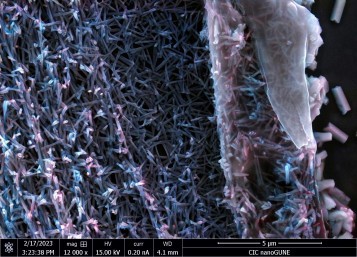HYTEM - Organic-inorganic hybrid thermoelectric materials through a new concept of simultaneous vapor phase coating and infiltration (VPI/SCIP)

Polymers and inorganics come together to support novel waste heat harvesting.
Organic-inorganic hybrid materials can significantly enhance the design space for novel functionalities, integrating the best properties of the individual components and even resulting in new ones. Polymers and functional inorganic compounds are the top players in the world of materials science. With the support of the Marie Skłodowska-Curie Actions programme, the HYTEM project will bring them together literally, generating inorganic structures simultaneously in the subsurface of a bulk polymer and on its top surface. The expected result: novel hybrid thermoelectric materials able to scavenge waste heat and turn it into electricity with unparalleled efficiency.
In a world of enormously rising energy consumption and environmental pollution, the demand for clean and renewable energy sources and for minimizing the energy loss is of critical importance. One strategy towards improved efficiency involves capturing and recycling the “waste” heat from all energy conversion processes. With a special class of materials, known as thermoelectrics, thermoelectric generators can be devised, which allow a direct conversion of heat into electricity. The goal of HYTEM is to develop advanced organic-inorganic hybrid thermoelectric materials by applying a newly developed concept of simultaneous vapour phase coating and infiltration (VPI/SCIP) of polymers with inorganics. SCIP is a viable, scalable and robust preparative strategy for obtaining high-performance hybrid superlattice TE materials with chemically linked organic/inorganic interfaces, which have never been demonstrated before. The originality of this work lies in creating a new hybrid materials set, where hierarchical superlattice structures of different inorganic materials are simultaneously grown in the subsurface of a polymer and on its top, which will allow to obtain a superior TE performance. An initial growth of inorganic nanoparticles inside a polymer bulk by infiltration will generate nanoscale point defects in the polymer, which will reduce the thermal conductivity of the matrix by inducing phonon scattering, while at the same time the electrical conductivity will be enhanced. To date, no work has been done to explore the potential of VPI/SCIP to generate hierarchical inorganic structuring in polymers. The knowledge gained from these experiments will have a great impact on the research of hybrid TEs due to the uniqueness of VPI/SCIP.

Disclaimer: The contents included in the present website reflect only the author’s view and the Research Executive Agency (European Commission) is not responsible for any use that may be made of the information it contains.
